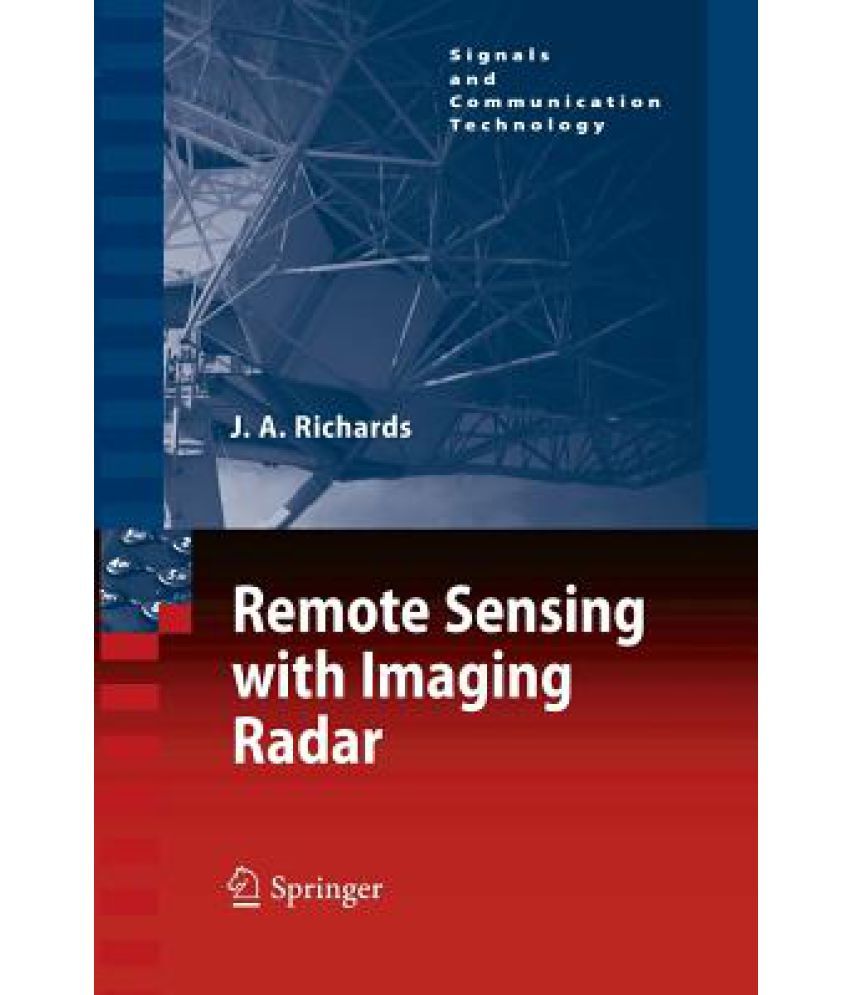Something went wrong. Please refresh the page and try again.
Something went wrong. Please refresh the page and try again.
Notifications can be turned off anytime from settings.
Item(s) Added To cart
Qty.
Something went wrong. Please refresh the page and try again.
Something went wrong. Please refresh the page and try again.
Exchange offer not applicable. New product price is lower than exchange product price
Please check the updated No Cost EMI details on the payment page
Exchange offer is not applicable with this product
Exchange Offer cannot be clubbed with Bajaj Finserv for this product
Product price & seller has been updated as per Bajaj Finserv EMI option
Please apply exchange offer again
Your item has been added to Shortlist.
View AllYour Item has been added to Shopping List
View AllSorry! Remote Sensing with Imaging Radar is sold out.


You will be notified when this product will be in stock
| ||||||||||||||
Brief Description
This book develops the technology of radar imaging, and an understanding of scattering concepts, in a manner suitable to the mathematical background of most earth scientists. The approach allows for quick movement to the practical aspects of imaging.
Learn More about the Book
This book is concerned with remote sensing based on the technology of imaging radar. It assumes no prior knowledge of radar on the part of the reader, commencing with a treatment of the essential concepts of microwave imaging and progressing through to the development of multipolarisation and interferometric radar, modes which underpin contemporary applications of the technology. The use of radar for imaging the earth's surface and its resources is not recent. Aircraft-based microwave systems were operating in the 1960s, ahead of optical systems that image in the visible and infrared regions of the spectrum. Optical remote sensing was given a strong impetus with the launch of the first of the Landsat series of satellites in the mid 1970s. Although the Seasat satellite launched in the same era (1978) carried an imaging radar, it operated only for about 12 months and there were not nearly so many microwave systems as optical platforms in service during the 1980s. As a result, the remote sensing community globally tended to develop strongly around optical imaging until Shuttle missions in the early to mid 1980s and free-flying imaging radar satellites in the early to mid 1990s became available, along with several sophisticated aircraft platforms. Since then, and particularly with the unique capabilities and flexibility of imaging radar, there has been an enormous surge of interest in microwave imaging technology. Unlike optical imaging, understanding the theoretical underpinnings of imaging radar can be challenging, particularly when new to the field.
On the Back Cover
This book treats the technology of radar imaging for remote sensing applications in a manner suited to the mathematical background of most earth scientists. It assumes no prior knowledge of radar on the part of the reader; instead it commences with a development of the essential concepts of radar before progressing through to a detailed coverage of contemporary ideas such as polarimetry and interferometry.
Because the technology of radar imaging is potentially complex the first chapter provides a framework against which the rest of the book is set. Together, the first four chapters present the technical foundations for remote sensing with imaging radar. Scattering concepts are then covered so that the reader develops the knowledge necessary for interpreting radar data, itself the topic of a later chapter which draws together the current thinking in the analysis of radar imagery.
The treatment is based on the assumption that the radars of interest are, in general, multi-polarised. Polarisation synthesis and polarised interferometric SAR are among the topics covered, as are tomography and the various forms of interferometry. A full chapter is given to bistatic radar, which is now emerging as an imaging technology with enormous potential and flexibility in remote sensing. The book concludes with a summary of passive microwave imaging.
A set of appendices is included that provide supplementary material, among which is an overview of the rather complicated process of image formation with synthetic aperture radar, and summaries of some of the mathematical procedures important for a full appreciation of radar as a remote sensing technology.
Review Quotes
1. From the reviews: This treatise is mostly targeted at Earth scientists, remote-sensing practitioners, and senior undergraduate or graduate students. the book successfully provides clear insights into all key concepts without resorting to complex mathematical tools. This book addresses with outstanding clarity all of the main issues associated with the physics, technology, and use of radar as an imaging tool for remote sensing. an excellent reference and a rich source of information for remote-sensing scientists, users, and students. (Sebastiano B. Serpico, IEEE Geoscience and Remote Sensing Society Newsletter, June, 2012)
2.
From the reviews:
This treatise is mostly targeted at Earth scientists, remote-sensing practitioners, and senior undergraduate or graduate students. the book successfully provides clear insights into all key concepts without resorting to complex mathematical tools. This book addresses with outstanding clarity all of the main issues associated with the physics, technology, and use of radar as an imaging tool for remote sensing. an excellent reference and a rich source of information for remote-sensing scientists, users, and students. (Sebastiano B. Serpico, IEEE Geoscience and Remote Sensing Society Newsletter, June, 2012)"
The images represent actual product though color of the image and product may slightly differ.
Register now to get updates on promotions and
coupons. Or Download App